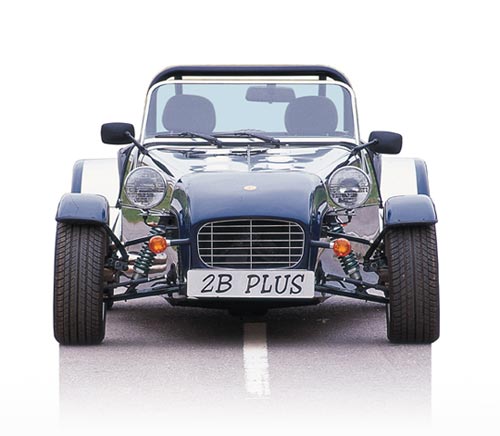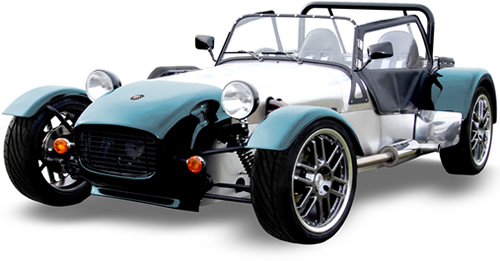A Robin Hood kit car was a British based kit car manufacturer based in Nottinghamshire; the Robin Hood kit car factory was a fair size at around 10,000 square feet and was situated on one and a half acres of land, which is pretty good grounds to build an excellent kit car company.
The Robin Hood kit car company was started in 1984, and they were making Ferrari Daytona replica’s based on the Rover SD1’s. In 1987 the Robin Hood engineering company decided to change direction and started manufacturing the S7, which is pretty much a Lotus, Seven inspired kit car. That is where the Robin Hood that I know and love was created from.
A Kit Car Based on The Triumph TR7
In 1989, Robin Hood produced another street legal kit car based on the extremely popular Triumph TR7, and the kit price started at a low £996 +VAT, which was very attractive to a lot of petrol heads up and down the United Kingdom. With more and more kits being sold, the Triumph TR7 was replaced by the Triumph Dolomite, which gave a lot more options for engine choices. This meant it would appeal to a more extensive range of people in a broader range of budgets as the Triumph Dolomite offered engines from 1100cc to 2000cc. This soon pushed Robin Hood Kit cars into the limelight, with many kits being sold and Robin Hood gaining popularity.

The trouble with Robin Hood engineering making significant progress and selling many kits to car enthusiasts is that Caterham Cars would soon enough see Robin Hood Cars in High court… However, fantastic legal advice subsequently fixed the issues, and Robin Hood Kit Cars were later back, and they had to make sure they did not wander from the strict guidelines that were set as a result of the legal action.
In ’96 and ’97, the sales of Robin Hood kit cars peaked at 500 kits a year, which meant that they had to find a bigger factory and new machines to handle the extra and growing workload. However, in ’98, with the introduction of the ‘Single Vehicle Approval’ test (SVA), the general public was a little unsure as to where the kit car industry was going. So Robin Hood decided to hold off and see what happens, and this was a massive blow to all kit car manufacturers, let alone Robin Hood that had just increased size for future growth. This government move almost wholly destroyed the kit car industry.
This slack period in the kit car industry meant that it gave time for the owners to take a look at the whole business, and what with the owner in his fifties, he would have ideally liked to of walked away and sold everything and carried on enjoying his other hobbies and settled into early retirement. However, with no offers on the table and his recent investment in CNC equipment and bigger premises, it meant that the only option was to soldier on and produce a new type of kit car and fight the failing kit car industry.
After lots of research and development, a revolutionary chassis was designed and manufactured from an 8mm o/d round tube. Even for experts in the manufacturing industry, it was an awe-inspiring engineering achievement. This was the perfect recipe for creating a fantastic budget kit car, and what with the kit industry in trouble, this was going to be an impeccable way to show the UK that a kit car is still an option and that the industry is alive and kicking after the government made the changes.
The Birth Of The Robin Hood 2B
The brand new designed chassis picked up the nickname of “Tubey” by the Robin Hood staff, and soon enough, this became the new model in the Robin Hood cars portfolio, so “Project 2B” was born. There was a Robin Hood record-breaking collection of 205 kits, and in one day, there was a total of 125 robin hood 2B kits collected.
In 2006, Robin Hood Engineering was bought by Great British Sports Cars Ltd., and this is who is operating now and selling the Robin Hood kit cars.
The Robin Hood Zero Kit Car
The latest of the Robin Hood Kit cars is ‘The Zero’, and this was launched in 2007, and since 2007, it has been established into one of the best Lotus seven styled kit cars to exist. Great British Sports Cars Ltd says that the Zero kit car is one of the most refined cars to have ever left our factory, and it has taken inspiration from the founder of Lotus Cars, Colin Chapman.
The Zero kit car is a small, lightweight kit car that has combined the latest engineering technologies to produce a modern-day seven-styled kit car that is cutting edge and does not lose any of the famous characters we all have come to know and love.

The Zero is not only a fantastic road-legal kit car, but it is also a fantastic track car that is very competitive and because the chassis can accommodate a wide variety of four-cylinder engines, and this opens up a lot of options for your track day experiences.
What is truly popular about the Zero is that the kit car can fit into almost anyone’s budget, from an extremely low spec to a top of the range no expense spared supercar. Like any other kit car, you really can decide your budget, and with the fantastic backing of GBS and massive community following, you won’t be stuck for help if you should need it.
Don’t Want To Build The Robin Hood Yourself? No Problem…
If you cannot be bothered to build it yourself, you can always buy one that is ready built, and I am pretty confident that Great British Sports Cars Ltd can organise all of it for you to your own specifications.
When you see a Robin Hood kit car for sale, the owner normally tells you it is a reluctant sale. Sometimes they may price it high, so they do not sell so quickly, but when you are ready, get on Autotrader or eBay and get your search notifications set up, and as soon as any new listings appear, you will be able to strike while the iron is hot so good luck on that.
Join A Robin Hood Kit Car Owners Club
Another thing you need to do when you buy a Robin Hood kit car is to join one of the many robin hood owners clubs. Ideally, finding a robin hood owners club that is local to you would be better so you can get involved with ride outs and it will be a lot more sociable, and you will get to see a lot more Robin Hoods.
Joining a kit cars owners club makes kit car ownership a lot more fun. You also get a lot more help and advice when things do go wrong, and there is an army of people with the right experiences to help you get your kit cars back on the road quickly.
You never know who you may meet in a kit car world, and you will find a lot more people with related cars that live close by, which means if you like to be sociable, you may find some very local like-minded people.
I do hope that you have enjoyed and found this article useful on the Robin Hood kit car. If you have any questions or would like to add anything, then please leave your comments below.
If you enjoyed this article, please stick around as I have owned a few kit cars over the years, and I plan to own a few more kit cars before I die, so if this interests you, please stick around and follow us on Facebook.
Resources
The Home of the new Robin Hood Zero www.robinhoodsportscars.co.uk/ZERO/